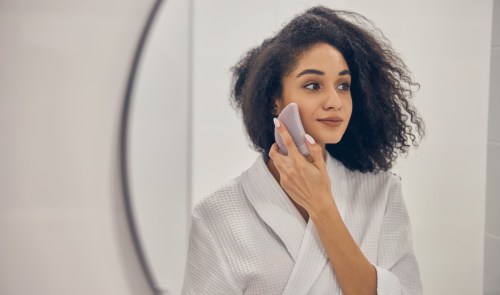Our editors independently select these products. Making a purchase through our links may earn Well+Good a commission
A well-balanced microbiome is critical to the overall health of your skin. This ecosystem of good bacteria, which lives on the surface of your complexion, is responsible for keeping your barrier functioning properly, and when things get out of whack it can lead to a whole host of problems.
Experts in This Article
medical esthetician at The LA Facialist
Diane Madfes, MD FAAD is a NYC-based dermatologist.
director of cosmetic and clinical research in dermatology and associate professor of dermatology at Mount Sinai Hospital
board-certified dermatologist and founder of NicholsMD
“Think of the microbiome like a seesaw—the diversity of organisms balances each other,” says Joshua Zeichner, MD, a board-certified dermatologist based in NYC, explains. “When the microbiome is disrupted, there may be an overgrowth of specific organisms that take over. In this case, one side of the seesaw is unbalanced, which contributes to developing skin conditions like eczema, acne, and rosacea.”
Unfortunately, there are a lot of things that can mess with your microbiome’s delicate equilibrium that are difficult to avoid—like environmental stressors and pollution, diet and lifestyle, genes, and exposure to UV rays. One of the main culprits that you do have control over, though, is your face-washing routine. Or, more specifically, the way you exfoliate.
“Over washing, scrubbing, or exfoliating can disrupt the outer skin layer and create an inhospitable environment for microorganisms, which can disrupt the balance of the microbiome promoting inflammation,” says Dr. Zeichner.
While it may be tempting to say, “alright, well, I just won’t exfoliate my skin anymore, and I’ll have a happy microbiome,” you don’t necessarily have to skip out on scrubbing altogether (after all, exfoliation is important for decongesting pores, diminishing the appearance of fine lines and wrinkles, and ensuring the rest of your products are working at maximum efficacy). Instead, you just need to make sure you’re doing it right.
So how can you use an exfoliator while keeping the microorganisms that are living on your skin, well, living? According to the pros, there is a simple way to avoid damage to the skin while sloughing off dead skin cells: be as gentle as possible. Keep reading for what you need to know about how to do exactly that.
1. Look for gentle ingredients
Remember those harsh walnut-infused formulas we all used to scrub our skin with back in the early aughts? Surprise, surprise–those were terrible for our microbiomes. Rather than opting for harsh physical exfoliants, pros recommend turning to gentler chemical options instead.
“Enzymes will be the gentlest form of exfoliation because they digest dead surface cells without impacting live cells,” says Candace Marino, a celebrity facialist based in Beverly Hills. Dr. Zeichner recommends looking for a ploy-hydroxy acid (PHA), like gluconolactone, which will provide similar benefits to alpha-hydroxy acids (AHAs) like glycolic acid but doesn’t penetrate the skin nearly as much as alpha-hydroxy acids (AHAs) like glycolic acid thanks to its larger molecular size. And if you have acne-prone skin, Dr. Madfes recommends using lactic or glycolic acid to gently buff away dead skin cells that can lead to blemishes.
If you do want to use a physical scrub, Dr. Zeichner recommends looking for one that employs a gentle exfoliating element, like rice powder.
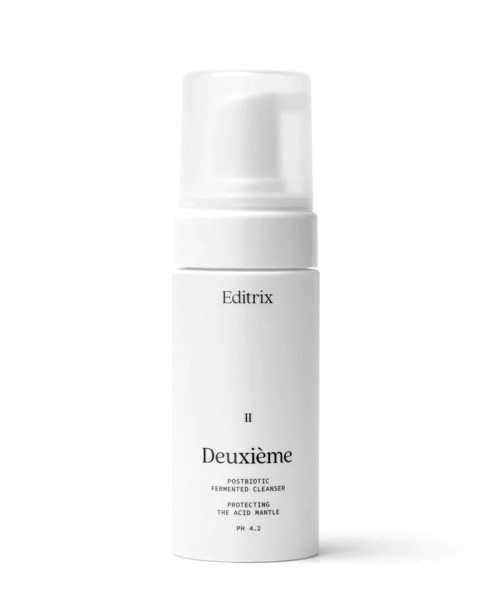
Editrix II. Deuxième Postbiotic Fermented Cleanser — $78.00
Using a postbiotic cleanser before exfoliation is another way to ensure that your microbiome has all the *food* it needs to thrive! This formula has a pH identical to the skin to ensure that your microbiome and acid mantle are in check while removing pollution and environmental debris after a long day.
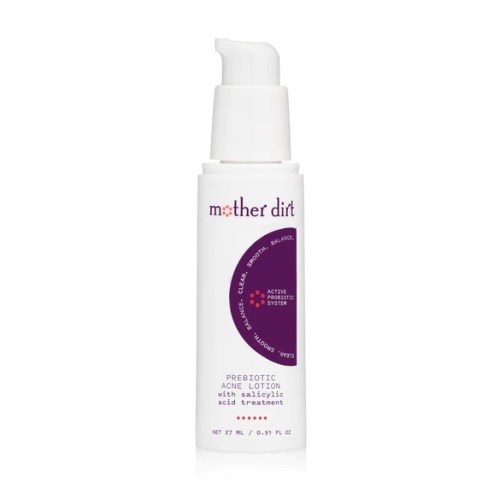
Mother Dirt Prebiotic Acne Lotion — $32.00
If you’re a skinimalist looking for a product that’ll give you that one-two (or perhaps, one-two-three) punch of moisturizing the skin, nourishing the microbiome, *and* exfoliating it in one go, consider giving this moisturizer a try. This product contains prebiotics to restore your microbiome and salicylic acid that gently clears the pores, making it great for those with acne-prone skin.
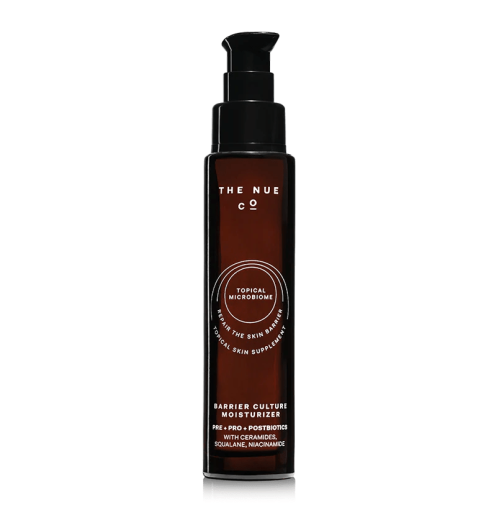
The Nue Co. Barrier Culture Moisturizer — $65.00
For those of you who are on the hunt for products that will restore your damaged microbiome, this moisturizer contains squalane to reintroduce moisture to your skin, plus niacinamide to reduce any inflammation. This nifty little moisturizer also contains prebiotics, probiotics *and* postbiotics to bring your microbiome back to health.
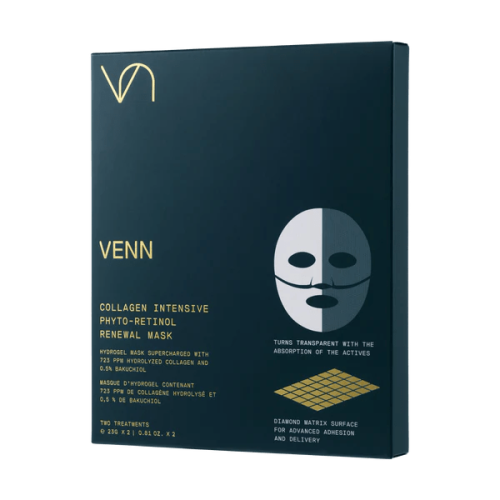
VENN Collagen Intensive Phyto-Retinol Renewal Mask — $47.00
Who says you can’t restore your microbiome while you exfoliate your skin? This mask contains bakuchiol, a plant-based alternative to retinol that is gentle on the skin. In addition, it also contains niacinamide to soothe irritation, peptides to help build collagen, and probiotics and postbiotics to give your microbiome the tools it needs to function. Basically, this simple-looking sheet mask can do it all.

Youth to the People Yerba Mate Resurfacing Energy Facial — $54.00
Speaking frankly, this stuff works like magic. This is my go-to exfoliating mask when I’m looking to minimize dullness and diminish the look of fine lines and wrinkles. This exfoliator contains active enzymes and sustainable micro-exfoliants like bamboo and diatomaceous earth to eat away at dead skin cells while remaining kind to the skin underneath. My favorite part? It only takes two minutes to do, which is perfect for people looking for a facial-like glow with little time to spare on a full-blown at-home spa day.

Drunk Elephant T.L.C. Sukari Babyfacial™ AHA + BHA Mask — $80.00
If you’re looking for something that’ll make it look like you have your facialist on speed dial, consider dabbling in this nifty little mask. The Babyfacial Mask has chemical exfoliants that slough off dead skin cells *and* clear the pores, leaving you with skin that is as soft and clear as, well, a baby’s bum. This mask comes with a mini facial oil so that you can restore any hydration that was lost during the exfoliation process.

Peter Thomas Roth PRO Strength 10% PHA Exfoliating Clarifying Liquid — $58.00
I love this product so intensely that I want to shout it from a rooftop. Here’s why: this liquid exfoliant contains PHAs, which are a gentler form of AHAs (commonly used to enhance a radiant and glowing complexion). I find that AHAs are a bit too rough for my sensitive skin—this liquid exfoliant sloughs off any dullness-causing dead skin cells from my complexion without ever irritating my delicate skin. If you are in the same sensitive-skin boat as me, you need this staple product.
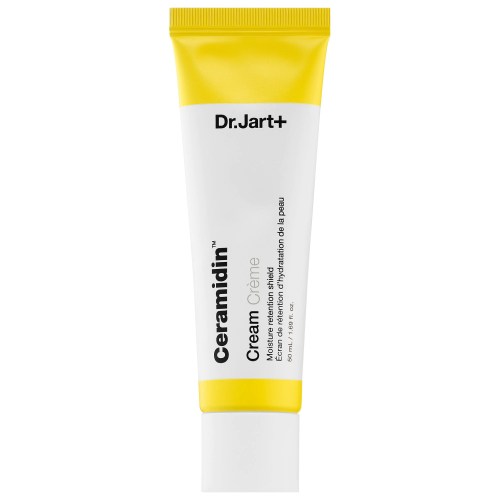
Dr. Jart+ Ceramidin™ Moisturizing Cream — $48.00
If you’re facing irritation from over-exfoliation, consider giving this cult-favorite ceramide cream a go. This moisturizer contains ceramides to create a moisturizing barrier on your skin, while oat kernel extract nourishes the microbiome and reduces redness and irritation.
2. Start slowly
It’s always a good idea to introduce new skin-care ingredients slowly so that your skin can build up a tolerance, but this practice is particularly important when it comes to using exfoliants. Kim Nichols MD, FAAD, a Harvard-trained board-certified dermatologist, recommends starting with one treatment per week with a gentle acid (like a PHA) so that you can reap the benefits of exfoliation without destroying your barrier.
Even after your complexion has adjusted, you’ll still want to keep your skin scrubbing at a minimum. “When it comes to exfoliation, less is more,” says Dr. Zeichner. “Nobody needs to exfoliate every day—stick to exfoliation once or twice per week.” Limiting the number of times you exfoliate per week will ensure that you abolish any dead skin cells without stripping the healthy skin or microbiome that’s sitting underneath.
3. Try a retinoid
Though retinol isn’t technically an exfoliant, it offers some of the same benefits via a different mechanism of action. While exfoliants primarily work by sloughing dead skin cells from the surface of your skin, retinoids deliver similar dullness/acne/discoloration/wrinkle-fighting benefits by stimulating cellular turnover to bring healthy new cells to replace dead, dull ones. “Retinoids are the best way to maintain a microbiome in mature skin,” says Dr. Madfes. “In addition, retinoids loosen the bonds between the keratinocytes to allow for exfoliation.” If you’re looking for an “exfoliant” that works well with your anti-aging routine, retinol is likely your best bet.
4. Practice post-exfoliation care
Post-exfoliation, you’ll want to supplement your scrubbing with microbiome-building ingredients. Dr. Zeichner recommends prebiotics, like oat extract and selenium, ” which are essentially food that preferentially feeds good bacteria on the skin.” He notes that most probiotics in skin care die in the presence of preservatives, so your best bet is to use prebiotics and post-biotics to maintain a healthy microbiome.

Editrix II. Deuxième Postbiotic Fermented Cleanser — $78.00
Using a postbiotic cleanser before exfoliation is another way to ensure that your microbiome has all the *food* it needs to thrive! This formula has a pH identical to the skin to ensure that your microbiome and acid mantle are in check while removing pollution and environmental debris after a long day.

Mother Dirt Prebiotic Acne Lotion — $32.00
If you’re a skinimalist looking for a product that’ll give you that one-two (or perhaps, one-two-three) punch of moisturizing the skin, nourishing the microbiome, *and* exfoliating it in one go, consider giving this moisturizer a try. This product contains prebiotics to restore your microbiome and salicylic acid that gently clears the pores, making it great for those with acne-prone skin.

The Nue Co. Barrier Culture Moisturizer — $65.00
For those of you who are on the hunt for products that will restore your damaged microbiome, this moisturizer contains squalane to reintroduce moisture to your skin, plus niacinamide to reduce any inflammation. This nifty little moisturizer also contains prebiotics, probiotics *and* postbiotics to bring your microbiome back to health.

VENN Collagen Intensive Phyto-Retinol Renewal Mask — $47.00
Who says you can’t restore your microbiome while you exfoliate your skin? This mask contains bakuchiol, a plant-based alternative to retinol that is gentle on the skin. In addition, it also contains niacinamide to soothe irritation, peptides to help build collagen, and probiotics and postbiotics to give your microbiome the tools it needs to function. Basically, this simple-looking sheet mask can do it all.

Youth to the People Yerba Mate Resurfacing Energy Facial — $54.00
Speaking frankly, this stuff works like magic. This is my go-to exfoliating mask when I’m looking to minimize dullness and diminish the look of fine lines and wrinkles. This exfoliator contains active enzymes and sustainable micro-exfoliants like bamboo and diatomaceous earth to eat away at dead skin cells while remaining kind to the skin underneath. My favorite part? It only takes two minutes to do, which is perfect for people looking for a facial-like glow with little time to spare on a full-blown at-home spa day.

Drunk Elephant T.L.C. Sukari Babyfacial™ AHA + BHA Mask — $80.00
If you’re looking for something that’ll make it look like you have your facialist on speed dial, consider dabbling in this nifty little mask. The Babyfacial Mask has chemical exfoliants that slough off dead skin cells *and* clear the pores, leaving you with skin that is as soft and clear as, well, a baby’s bum. This mask comes with a mini facial oil so that you can restore any hydration that was lost during the exfoliation process.

Peter Thomas Roth PRO Strength 10% PHA Exfoliating Clarifying Liquid — $58.00
I love this product so intensely that I want to shout it from a rooftop. Here’s why: this liquid exfoliant contains PHAs, which are a gentler form of AHAs (commonly used to enhance a radiant and glowing complexion). I find that AHAs are a bit too rough for my sensitive skin—this liquid exfoliant sloughs off any dullness-causing dead skin cells from my complexion without ever irritating my delicate skin. If you are in the same sensitive-skin boat as me, you need this staple product.

Dr. Jart+ Ceramidin™ Moisturizing Cream — $48.00
If you’re facing irritation from over-exfoliation, consider giving this cult-favorite ceramide cream a go. This moisturizer contains ceramides to create a moisturizing barrier on your skin, while oat kernel extract nourishes the microbiome and reduces redness and irritation.
5. Know when to stop
If you find that you’ve damaged your microbiome in an effort to achieve a mirror-like complexion (which, as we talked about, can show up in the form of acne, dryness, rosacea and eczema)—don’t worry. Marino recommends discontinuing the use of acids and retinoids, and keeping exfoliation at an all-time low when your skin is in distress.
Instead, nourish your skin with restorative ingredients. “Ceramides contain fatty acids that are crucial in not only providing lasting hydration, but also protecting the skin,” says Dr. Nichols, and niacinamide will help to reduce inflammation and soothe irritated skin. She recommends finding a product that both moisturizes and calms the skin while maintaining the skin’s microbiota, like Heritage Store’s Rosewater Moisturizer.
Exfoliating the skin while keeping your microbiome’s health in mind can seem like a never-ending Odyssey of misfortunes—but with the right products and techniques, you’ll be smooth-sailing to a radiant (and healthy!) complexion in no time.
Sign Up for Our Daily Newsletter
Get all the latest in wellness, trends, food, fitness, beauty, and more delivered right to your inbox.
Got it, you've been added to our email list.
